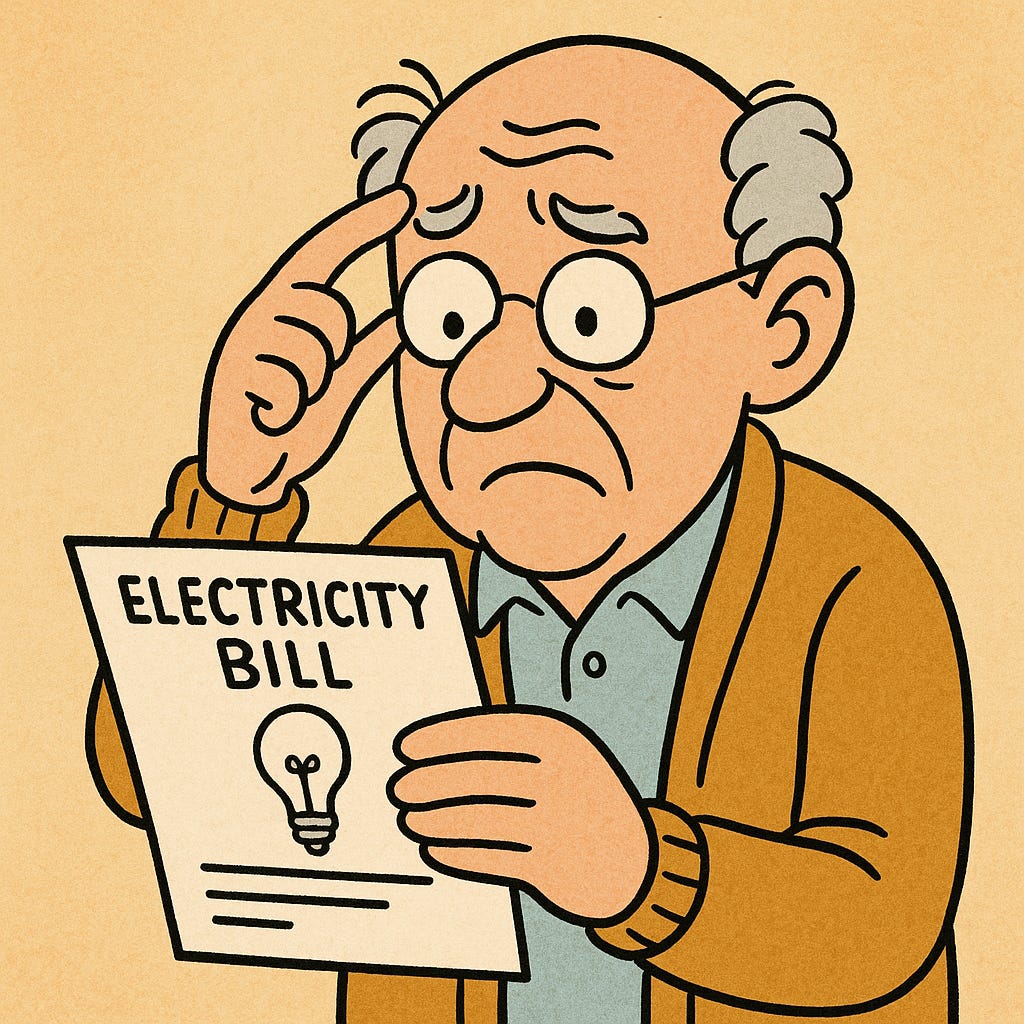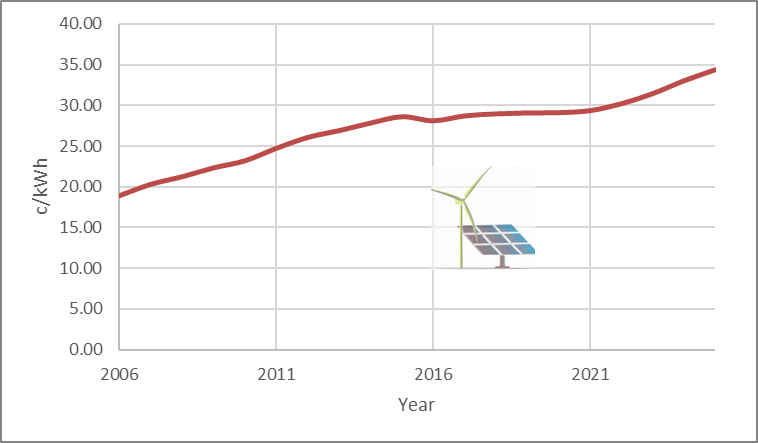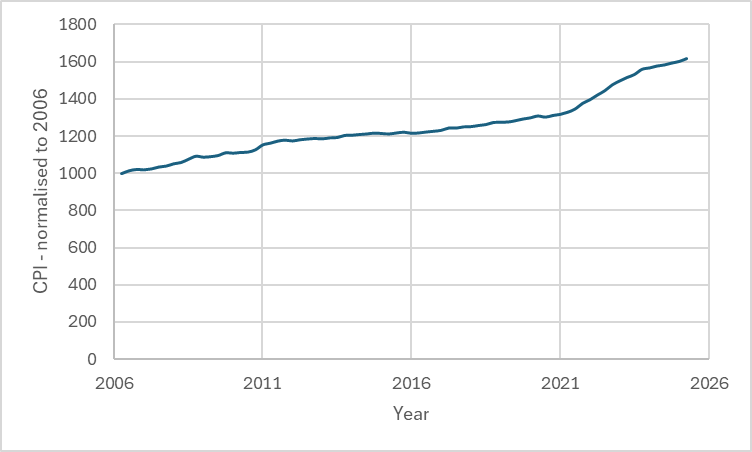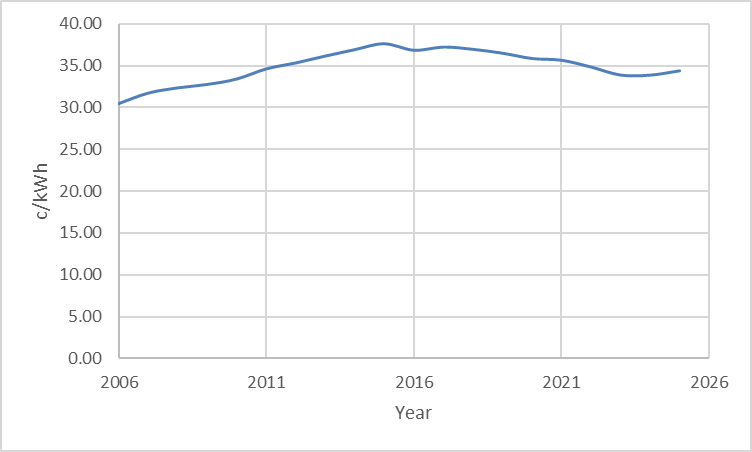What If I Told You Electricity Isn’t Getting More Expensive?
Counter to the prevailing narrative, for residential users, electricity is now 7% cheaper than a decade ago. Don't believe me? Read on.
I took a call today from a former colleague and I was lamenting what a bad job the electricity industry has done in celebrating the fact the electricity prices today are 7% cheaper than they were a decade ago. If the prevailing narrative in the media is a measure of the average punter on the street, you’d probably tell me I’d lost my mind and that you know for certain that your electricity bill is much more than it was 10 years ago.
You’d be right in nominal terms. Here is a graph of residential electricity prices in NZ since 20061. There is a consistent upward trend starting from around 19c in 2006 to the present day 34c, with the upward trend accelerating post COVID.
However, this graph is highly misleading because most things have gone up since 2006 due to inflation. Here is a graph of the CPI in NZ over the same time period2 normalised to 2006 as the start year. What this graph shows is that in 2025, the average good or service in NZ costs about 160% more than it did in 2006. Or put another way, your NZ dollar buys you around 63% now compared to what it did in 2006. Of note is the relatively sharp rise since 2021 - this is the price we have collectively paid for “quantitative easing” (aka money printing) by central banks around the world during COVID. If your salary or wage hasn’t gone up by at least 22% since 2021, then you’ve gone backwards.
So in order to tell the true story of electricity prices in the last twenty years we need to normalise the price against the CPI. Watch what happens:
I think you might agree that this chart tells quite a different story than the first chart. What it tells us is that in real terms since 2006, electricity prices have increased from ~30c to ~35c / kWh, an increase of 16% over twenty years, less than 1% per year. However, the chart is a tale of two decades. In the decade to 2016, prices rose faster than inflation and increased in real terms by about 24% over that decade. However, in the decade since then, prices have fallen around 7%.
So when people tell you that their electricity bill is higher now, the correct response is actually: “Compared to when?”, and “compared to milk and groceries?”, or “compared to petrol?”. “What about my gas bill?”
As you might be able to tell, I’m deeply frustrated by the lack of truth telling on this particular story. Yes the electricity industry has not been perfect during this time, and there are no doubt some meaningful things that could be done to improve price outcomes for consumers. These are more likely “tweaks” though, than large government interventions.
Would I like prices to be lower today in real terms than 20 years ago? Absolutely. Can we get there? I think so. The impact of cheap renewables, primarily solar, has yet to be felt in this country, but it’s coming. We do need to do things to make sure our spend on poles and wires does not escalate too much as this makes up around 40% of the average bill - but the Commerce Commission does place limits on how much distribution businesses and Transpower can raise their prices. This is appropriate for regulated monopolies.
On the generation side, we have a well functioning electricity market and the market is telling everyone to build. This is happening with plenty of new generation coming online in NZ in the last two years and more to come. Should we be going faster - yes! But the problem is not the current price that consumers are paying for power.
Source: Stats NZ: https://infoshare.stats.govt.nz/ Group: Consumers Price Index - CPI. Table: CPI All Groups for New Zealand (Qrtly-Mar/Jun/Sep/Dec)





